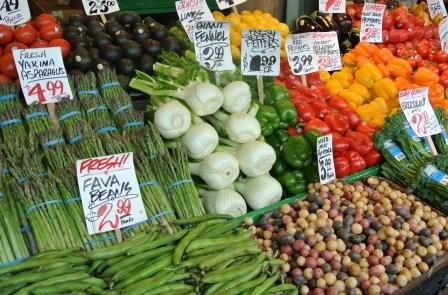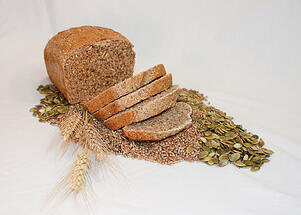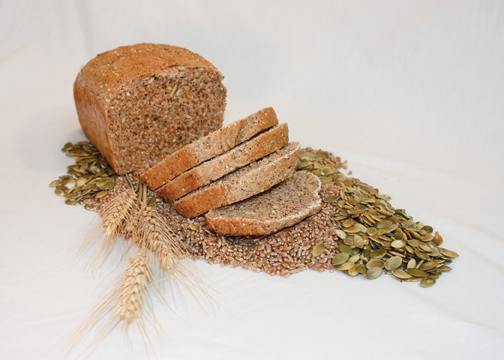According to the Centers for Disease Control and Prevention (CDC) about 71 million American adults have high LDL cholesterol (a.k.a “bad” cholesterol.)
Those with high total cholesterol have their risk for heart disease doubled as compared to those with healthy levels.
What’s even scarier is that high cholesterol is a condition that has no warning signs or symptoms but can lead to artery clogging plaque, which can lead to heart disease, heart attacks, stroke, or even death.
This National Cholesterol Education Month, make these 7 changes to better control your cholesterol levels.
- Get yourself to a healthy body weight
Being overweight or obese promotes cholesterol synthesis and lowers HDL cholesterol levels (a.k.a. “good” cholesterol) in the body, increasing your risk of heart disease. Losing even just several pounds has been known to raise HDL levels. HDL or your ‘high density lipoprotein’ cholesterol acts as a scavenger looking to pick up excess cholesterol in your blood to bring it to the liver to be broken down actively to lower your cholesterol levels.
- Quit smoking
Smoking has been known to damage arterial walls, which is linked to increased risk of atherosclerosis or the buildup of plaque on your arteries. This can lead to heart attack, stroke, or even death. Not to mention smoking increases blood pressure, promotes higher overall cholesterol levels, lowers your HDL levels, and also increases your risk of other diseases including COPD and cancer.
- Exercise
Exercise stimulates your liver to make HDL and is linked to lower overall cholesterol levels as well. It also leads to weight loss or maintenance of a healthy body weight!
- Limit cholesterol, saturated fats, and trans fats in your diet.

- Include more fiber in your diet by eating fresh whole foods like whole grains, fruits, vegetables, beans, legumes, and nuts.
Fiber is an excellent component to incorporate into your diet when trying to lower cholesterol levels as it binds to bile acids made of cholesterol in your gut causing them to be excreted. Your body needs bile for fat digestion, so it takes up cholesterol from the blood to make more, and in turn lowers cholesterol levels. Getting fiber from whole foods sources also provides you with a wide array of disease fighting nutrients and phytochemicals.

- Increase your intake of healthy fats -- monounsaturated fats and polyunsaturated fats including Omega 3 Fatty Acids.
 Replacing the fats in your diet with fats from plant sources such as olive oil, flaxseed, canola oil, walnuts, sesame oil, and fish such as tuna, salmon, or mackerel will provide you with an array of healthy fats. Monounsaturated fats will lower your total cholesterol and LDL levels while raising your HDL levels. On the other hand, polyunsaturated fats will lower each type of cholesterol, and Omega 3s will lower blood triglyceride levels as well as total cholesterol levels in addition to potentially reducing the risk of a blood clots and hardening arteries. The key is to replace unhealthy sources of fat with healthier options as opposed to just adding additional fats to your diet.
Replacing the fats in your diet with fats from plant sources such as olive oil, flaxseed, canola oil, walnuts, sesame oil, and fish such as tuna, salmon, or mackerel will provide you with an array of healthy fats. Monounsaturated fats will lower your total cholesterol and LDL levels while raising your HDL levels. On the other hand, polyunsaturated fats will lower each type of cholesterol, and Omega 3s will lower blood triglyceride levels as well as total cholesterol levels in addition to potentially reducing the risk of a blood clots and hardening arteries. The key is to replace unhealthy sources of fat with healthier options as opposed to just adding additional fats to your diet.

- Eat foods with plant sterols or stanols
Sterols and stanols can be found primarily in plant oils including soy, rapeseed, corn, and sunflower oil. They have the ability to lower cholesterol levels by inhibiting its absorption. Consuming about 2-3 grams per day has been shown to lower cholesterol levels by 9-20%. You can find them as supplements or added to foods such as yogurts or spreads.
Do you know anyone who would benefit from the Bread Business Dietitian's cholesterol lowering tips? Use the social sharing buttons at the top of this post to pass this information along in honor of Cholesterol Education Month.
References:
Gropper S, Smith J, and Groff J. Advanced Nutrition and Human Metabolism. 4th ed. Belmont, CA [Wadsworth/Thomson, 2005. Print.
Mahan L.K, Escott-Stump S. Krause’s Food and Nutrition Therapy. 12th ed. St. Lous, MO. Saunders Elsevier. 2008. Print
Duyff R L. Complete Food and Nutrition Guide. 3rd ed. Hoboken, NJ. Jon While & Sons, Inc. 2006. Print.




